On this page
Paul A. JohnsgardThis page lists books written by Paul A. Johnsgard. The books on the page are ordered by publication date with the most recent at the top.
|
|
|
|
Those of the Gray Wind: The Sandhill CranesPaul A. Johnsgard
Bison Books
2nd edition
2017
"With Paul A. Johnsgard, we follow the migration of the sandhill cranes from the American Southwest to their Alaskan breeding grounds and back again, an annual pattern that has persisted over millions of years. By selecting four historic time frames of the migration between 1860 and 1980, Johnsgard illustrates how humans have influenced the flocks and how different American cultures have variously responded to the birds and perceived their value. Each section focuses on the interactions between children of four different American cultures and sandhill cranes, triggered by events occurring during the annual life cycle of the cranes. The story is enriched by the author's exquisite illustrations, by Zuni prayers, and by Inuit and Pueblo legends. Originally published in 1986, this new edition features a new preface and afterword and a new gallery of photographs by the author, Those of the Gray Wind is a classic story of a timeless ritual that can be enjoyed for generations to come."
|
Buy from amazon.co.uk 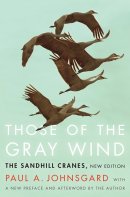
|
|
The North American Perching and Dabbling DucksPaul A. Johnsgard
Zea Books
2017
"This volume updates and expands a portion of P. A. Johnsgard’s 1975 Waterfowl of North America. It includes two species of the perching duck tribe Cairinini: the muscovy duck and the wood duck, which forage on the water surface but perch in trees and nest in elevated tree cavities. It also includes the dabbling, or surface-feeding, duck tribe Anatini, that forage on the water surface but nest on the ground. The species that breed in North America include the familiar mallards, wigeons, pintails, and teal. Descriptive accounts of the distributions, populations, ecologies, social-sexual behaviors, and breeding biology of all these species are provided. Five additional Eurasian and West Indian species that have been reported in North America have also been included with more abbreviated accounts. The updated bibliography contains more than 1,000 references. There are 12 maps, 31 drawings, 28 photos, and 58 anatomical or behavioral sketches."
|
Buy from amazon.co.uk 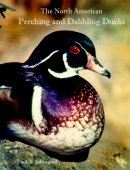
|
|
The North American Geese: Their Biology and BehaviorPaul A. Johnsgard
Zea Books
2016
"There are eight currently recognized species of North American geese: emperor, greater white-fronted, snow, Ross's, Canada and cackling, barnacle, and brant geese. The North American Geese describes each species' geographic range and subspecies, its identification traits, weights and measurements, and criteria for its age and sex determination. Ecological and behavioural information includes each species' breeding and wintering habitats, its foods and foraging behaviour, its local and long distance movements, and its relationships with other species. Reproductive information includes each species' age of maturity, pair-bond pattern, pair-forming behaviours, usual clutch sizes and incubation periods, brooding behaviour, and postbreeding behaviour. Mortality sources and rates of egg, young, and adult losses are summarized, and the past and current populations of all species are estimated."
|
Buy from amazon.co.uk 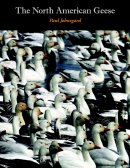
|
|
The Hummingbirds of North AmericaPaul A. Johnsgard
Smithsonian Institution Scholarly Press
2nd edition (paperback)
2016
This edition originally published in hardback in 1997.
" First published in 1983, this acclaimed volume now has been revised and expanded to include twenty-five Mexican species, such as the long-billed starthroat and the fork-tailed emeralds, thereby more than doubling the species coverage of the original edition. Full species-by-species accounts survey the evolutionary history, anatomical and physiological specializations, and comparative ecology, behavior, and reproductive biology of this largest family of nonpasserine birds. Individual accounts are complemented by 24 full-color paintings. Including updated range maps, identification keys, and a bibliography that has been broadened to include literature on the little-known Mexican species, the book is both accessible to amateur birders and an authoritative volume for ornithologists."
|
Buy from amazon.co.uk 
|
|
A Chorus of Cranes: The Cranes of North America and the WorldPaul A. Johnsgard
Photographs: Thomas D. Mangelsen
University Press Of Colorado
2015
"Accompanied by the stunning photography of Thomas D. Mangelsen, A Chorus of Cranes details the natural history, biology, and conservation issues surrounding the abundant sandhill crane and the endangered whooping crane in North America. Author Paul A. Johnsgard, one of the leading authorities on cranes and crane biology, describes the fascinating social behaviors, beautiful natural habitats, and gruelling seasonal migrations that have stirred the hearts of people as far back as medieval times and garnered the crane a place in folklore and mythology across continents. Johnsgard has substantially updated and significantly expanded his 1991 work Crane Music, incorporating new information on the biology and status of these two North American cranes and providing abbreviated summaries on the other thirteen crane species of the world. The stories of these birds and their contrasting fates provide an instructive and moving history of bird conservation in North America. A Chorus of Cranes is a gorgeous and invaluable resource for crane enthusiasts, birders, natural historians, and conservationists alike."
|
Buy from amazon.co.uk 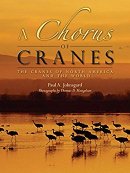
|
|
Global Warming and Population Responses among Great Plains BirdsPaul A. Johnsgard
Zea Books
2015
"Based on an analysis of 47 years (1967–2014) of Audubon Christmas Bird Counts (CBC), evidence for population changes and shifts in early winter (late December) ranges of nearly 150 species of birds in the Great Plains states is summarized, a region defined as including the Dakotas, Nebraska, Kansas, Oklahoma, and the Texas panhandle. …… Over this 47-year period there has been a progressive winter warming trend regionally, and associated ecological changes, influencing the early winter regional abundance and geographic distributions of many birds. The great majority these changes have involved northward shifts in early winter distributions. Over this approximate half-century interval at least six species (Canada goose, mallard, black-capped chickadee, American goldfinch, and house finch) have shifted their areas of greatest early winter abundance two states northward, and the centers of maximum abundance of at least ten other species have shifted northward by at least one state. Milder and less stressful early winter temperatures, with associated extended periods of ice-free water and greater access to snow free foraging sites, are believed to be responsible."
|
Buy from amazon.co.uk 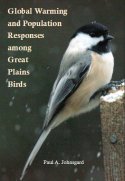
|
|
Seasons of the Tallgrass PrairiePaul A. Johnsgard
University Of Nebraska Press
2014
"A respected author and scholar, Paul A. Johnsgard has spent a lifetime observing the natural delights of Nebraska’s woodlands, grasslands, and wetlands. Seasons of the Tallgrass Prairie collects his musings on Nebraska’s natural history and the issues of conservation facing our future. Johnsgard crafts essays featuring snow geese, owls, hummingbirds, and other creatures against the backdrop of Great Plains landscapes. He describes prairie chickens courting during predawn hours and the calls of sandhill cranes; he evokes the magic of lying upon the prairie, hearing only the sounds of insects and the wind through the grasses. From reflections following a visit to a Pawnee sacred site to meditations on the perils facing the state’s finite natural resources, Seasons of the Tallgrass Prairie celebrates the gifts of a half century spent roaming Nebraska’s back roads, trails, and sometimes-forgotten places."
|
Buy from amazon.co.uk 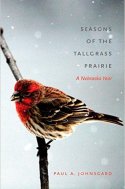
|
|
Game Birds Of The World: A Catalog Of The Madson CollectionPaul A. Johnsgard, Eric Fowler, Michael Forsberg, Mary Bomberger Brown, Dee Ebbeka, Jacki Loomis, and Patricia W. Freeman
University of Nebraska School of Natural Resources / University of Nebraska State Museum
2014
Opening lines of introduction: "One winter day in late 2013 I had a phone call from a gentle - man who identified himself as Dr. Everett (Buzz) Madson, an ophthalmologist from Omaha, and who said he had been a student of mine in the Introductory Zoology class that I taught for nearly 30 years at the University of Nebraska Lincoln. Roughly 5,000 undergraduates had enrolled in that class with me over the years, and I confessed to not remembering him personally. He told me that my lectures, especially those on parasite life histories, had greatly impressed him, and had influenced his decision to go into medicine as a career. Additionally, Dr. Madson told me that during much of his life he had hunted gamebirds over many parts of the world, and had amassed a collection of nearly 100 mounted specimens as a result. He said that he intended to donate the collection to the University of Nebraska State Museum, and to dedicate the gift to me in remembrance of my influence on him."
|
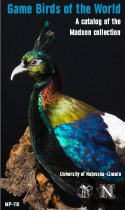
 |
|
The Birds of NebraskaPaul A. Johnsgard
Zea Books
Revised edition
2013
"This summary of the birds of Nebraska grew out of the research associated with the writing of my Birds of the Great Plains: Breeding Species and Their Distribution (University of Nebraska Press, 1979). Inasmuch as the only previous comprehensive summary of Nebraska's birds, the "Revised Check-list of Nebraska Birds" (Occasional Papers of the Nebraska Ornithologists' Union, 1958) was about 40 years old, and has since received only a minimal revision that covered the period to 1970, it seemed apparent to me that a completely new list of birds of the state should be prepared. For my present purposes this list has been restricted to those species that have been convincingly reported at least once in Nebraska from historic time to the present. It has also been modified in its current revision to conform very closely in that regard to the most recent Nebraska Ornithologists' Union's "Official list of the birds of Nebraska" (Brogie, 2010; NOU Records Committee, 2011 and annual updates). Many important records of Nebraska's birds are published in the official journal of the Nebraska Ornithologists' Union (N.O.U.), the Nebraska Bird Review. Because of the amazing proliferation of records (and birders) since the early 2000s, it was impossible for me to summarize individually all of the post-2000 records published in the Nebraska Bird Review except for those I considered most important. I also excluded some records of exotic waterfowl that almost certainly were escaped from captivity. The seasonal reports in that journal are by far the most complete and most valuable record of current bird life in Nebraska, and fortunately this journal is now being archived in the University of Nebraska's Digital Commons website."
|
 |
|
Birds of the Central Platte River Valley and Adjacent CountiesMary Bomberger Brown and Paul A. Johnsgard
Zea Books
2013
"The central Platte River Valley region of Nebraska is described ecologically, and defined as encompassing 11 counties and nearly 10,000 square miles, and extending about 120 miles from the western edge of Lincoln County to the eastern edge of Merrick County. At its center is the Platte River, the historic spring staging area for Sandhill and Whooping cranes, five species of geese, and millions of waterfowl and water-dependent birds, in addition to providing the breeding habitats for more than 100 other bird species. Collectively, at least 373 bird species have been reported from the Central Platte Valley, making it the most species-rich bird location in Nebraska, and of the most species-diverse regions in the Great Plains. The abundance, distribution and habitats of these species are summarized, with special consideration given to the Valley's three nationally threatened and endangered birds, the Whooping Crane, Interior Least Tern, and Piping Plover, and the now probably extinct Eskimo Curlew. Also included are a species checklist, a list of 82 regional birding sites, and a bibliography of 130 citations."
|
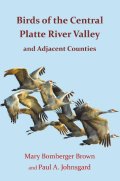 |
|
Birds and Birding in Wyoming's Bighorn Mountains RegionJacqueline L. Canterbury, Paul A, Johnsgard, Helen F. Downing
Zea Books
2013
"We defined the Bighorn region as encompassing or about 6,800 square miles (latilong blocks 4 and 5), and determined that at least 327 bird species have been reliably reported from the region, plus 15 species of hypothetical status. This compared with a total of 427 species reported for all of Wyoming as of 2010 (Faulkner, 2010). Breeding within the region has been confirmed for 190 species. Among the breeders, 77 species have breeding ranges that were classified as to having an either clearly eastern-oriented or western-oriented affinity in North America. Of these, 55 (71 percent) were judged to be western-oriented and 22 (29 percent) eastern-oriented, indicating that the strongest zoogeographic affinities of Bighorn region birds are with western North America. Species descriptions indicate relative abundance, breeding status by latilong, locality/date records for rarer species, and other relevant information. Many regional birding areas are described and mapped, and results of recent regional breeding bird surveys and seasonal bird counts are summarized. Line drawings illustrate representatives of each of the 53 avian families documented for the region, and there are more than 60 literature citations."
|
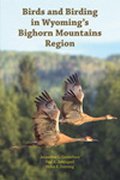 |
|
Yellowstone Wildlife: The Ecology and Natural History of the Greater Yellowstone EcosystemPaul A. Johnsgard
Photographs: Thomas D. Mangelsen
University Press of Colorado
2013
"Yellowstone Wildlife is a natural history of the wildlife species that call Yellowstone National Park and the Greater Yellowstone Ecosystem their home. Illustrated with stunning images by renowned wildlife photographer Thomas Mangelsen, Yellowstone Wildlife describes the lives of species in the park, exploring their habitats from the Grand Tetons to Jackson Hole. From charismatic megafauna like elk, bison, wolves, bighorn sheep, and grizzly bears, to smaller mammals like bats, pikas, beavers, and otters, to some of the 279 species of birds, Johnsgard describes the behavior of animals throughout the seasons, with sections on what summer and autumn mean to the wildlife of the park, especially with the intrusion of millions of tourists each year. Enhanced by Mangelsens wildlife photography, Yellowstone Wildlife reveals the beauty and complexity of these species intertwined lives and that of Yellowstones greater ecosystem."
|
Buy from amazon.co.uk 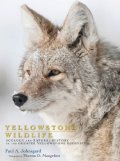
|
|
Swans: Their Biology and Natural HistoryPaul A. Johnsgard
Zea Books
2012
"The seven species of swans are an easily and universally recognised group of waterfowl, which have historically played important roles in the folklore, myths and legends in many cultures. Among the largest of all flying birds, they have been used as symbols of royalty, grace and beauty, and largely for these reasons, swans have only rarely been considered acceptable as targets for sports hunting. Swans occur on all continents but Africa, though most species are found in the temperate and arctic zones of North America and Eurasia. Swans are a long-lived species and are among the most strongly monogamous of birds, having prolonged pair and family bonds that influence their flocking and social behaviour, and contribute to the overall high degree of human interest in them. Swans: Their Biology and Natural History describes their distributions, ecology, social behaviour, and breeding biology. A bibliography of nearly 700 references is included."
|
Buy from amazon.co.uk 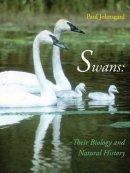
|
|
Wetland Birds of the Central Plains: South Dakota, Nebraska and KansasPaul A. Johnsgard
Zea Books
2012
"This 100,000-word monograph summarizes the distribution, abundance and breeding biology of the 183 species of wetland-adapted birds reliably reported from South Dakota, Nebraska and Kansas through 2011. These include 91 species known to breed or have historically bred in the region, 51 species that migrate through the region but are not yet known to breed or have bred there, and 41 species that are extremely rare, probably extinct, or for which evidence as to their current occurrence is questionable. Brief summaries of the breeding biology of all the regionally nesting species are provided, and information for all species is summarized as to seasonal migrations, habitats, and (in most cases) population status. There is an introductory account of the topography, climate and vegetation of the region insofar as these environmental factors influence wetland birds, six regional maps, and more than 500 references."
|
Buy from amazon.co.uk 
|
|
Wings over the Great Plains: Bird Migrations in the Central FlywayPaul A. Johnsgard
Zea Books
2012
"The great North-South migratory pathway across the North American Great Plains-from the tropic wintering grounds to the high arctic breeding areas-is analyzed for the first time. Describes 114 U.S. and 21 Canadian localities of special importance to migrating birds. Discusses nearly 400 species of 50 avian families. Includes 7 maps, 49 figures and over 100 literature citations."
|
Buy from amazon.co.uk 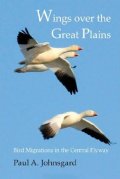
|
|
Nebraska's Wetlands: Their Wildlife and EcologyPaul A. Johnsgard
University Of Nebraska
2012
"Wetlands are among the most productive of all North American ecosystems, supoporting half of the U.S. species of fish, a third of its birds, almost a quarter of its plants, and a sixth of its mammals. Dr. Paul A. Johnsgard's newest book describes for the reader the wetlands regions of Nebraska along with the individual ecosystems. Thirty-three drawings of the birds of the regions along with seven maps and fifteen tables bring the wetlands to life on the pages."
|
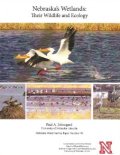 |
|
A Prairie’s Not ScaryPaul A. Johnsgard
Produced for Spring Creek Prairie Audubon Center, Denton, Nebraska
Zea Books
2012
"Twenty poems and 23 drawings illustrate the integrated habitat and denizens of the North American prairies: mammals, birds, insects, and plants. Probably only 1-3 percent of Nebraska’s original tallgrass prairie still exits. There are very few remaining tallgrass prairies in Nebraska as large as Spring Creek Prairie. They represent important repositories for our natural heritage of native plants and animals. It is not uncommon for tallgrass prairies to have 250-300 species of plants present and several hundred species of insects."
|
Buy from amazon.co.uk 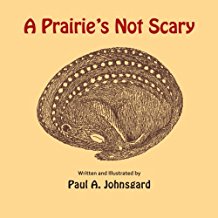
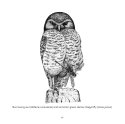
|
|
Save the Last Dance: A Story of North American Grassland GrouseNoppadol Paothong
Text: Joel Vance
Foreword: Paul Johnsgard
2012
"A new book by award-winning photographer, Noppadol Paothong, and noted outdoor writer, Joel M. Vance, strives to rescue grassland grouse from the brink of extinction by showing the world what it stands to lose if these species are allowed to disappear forever. This 204-page hardbound book, Save the Last Dance – A Story of North American Grassland Grouse, captures the dazzling beauty of seven grouse species whose populations are diminishing across the prairies and plains of America – and one species that has already lost its battle for survival. Fortunately, many conservation groups have championed the cause of grassland grouse. But will it be too little, too late? The birds can be saved if enough people care. The book fosters knowledge and understanding of these spectacular birds and their diminishing habitats so future generations, too, can marvel at their grace and beauty. The book covers the following species: Heath Hen, Greater Prairie-Chicken, Lesser Prairie-Chicken, Attwater's Prairie-Chicken, Greater Sage-Grouse, Gunnison Sage-Grouse, and Sharp-tailed Grouse, along with conservation efforts to save these species."
|
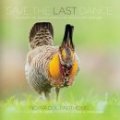 |
|
Sandhill and Whooping Cranes: Ancient Voices Over America's WetlandsPaul A Johnsgard
Bison Books
2011
"Johnsgard has spent nearly a half century observing cranes, from a yearly foray to Nebraska's Platte River valley to see the spring migration, to pilgrimages to the birds' wintering grounds in Arizona and nesting territory in Alaska. In this book he draws from his own extensive experience as well as the latest science to offer a richly detailed and deeply felt account of the ecology of sandhill and whooping cranes and the wetlands in which they live. Incorporating current information on changing migration patterns, population trends, and breeding ranges, Johnsgard explains the life cycle of the crane, as well as the significance of these species to our natural world. He also writes frankly of the uncertain future of these majestic birds, as cranes and their habitats face the effects of climate change and increasing human population pressures. Illustrated with the author's own ink drawings and containing a detailed guide to crane-viewing sites in the United States and Canada, this book is at once an invaluable reference and an eloquent testimony to how much these birds truly mean."
|
Buy from amazon.co.uk 
|
|
A Nebraska Bird-Finding GuidePaul A. Johnsgard
Zea Books
2011
"Nebraska lies in the transition zone between North American eastern and western avifaunas and is home to more than 200 breeding and 150 migrant species. This definitive guide to Nebraska birdwatching by the state's preeminent ornithologist includes a county-by-county rundown of the best sites, a calendar of migrations, an annotated checklist of regularly occurring Nebraska birds, and recommendations for optical equipment, publications and reference materials, and contact information for conservation and ornithological groups. It features 48 maps as well as photographs and drawings by the author."
|
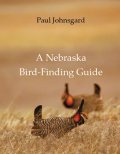 |
|
Rocky Mountain Birds: Birds and Birding in the Central and Northern RockiesPaul A. Johnsgard
Zea Books
2011
"This book is in part based on the author's earlier Birds of the Rocky Mountains (1986, revised 2009), but over a third of the original text has been eliminated. The rest has been updated, expanded and modified to be less technical and more useful to birders in the field. Bird enthusiasts will find viewing locations and updated contact information for hundreds of sites in Wyoming, Colorado, Montana, Idaho, Alberta, and British Columbia. Part 1 outlines the habitats, ecology, and bird geography of the Rocky Mountains north of the New Mexico–Colorado border, including recent changes in the ecology and avifauna of the region. It provides detailed lists of major birding locations and guidance about where to search for specific Rocky Mountain birds. Part 2 considers all 328 regional species individually, with information on their status, habitats and ecology, suggested viewing locations, and population. Includes 3 maps and 11 drawings by the author."
|
Buy from amazon.co.uk 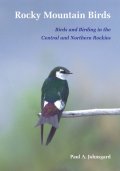
|
|
Ducks, Geese and Swans of the WorldPaul A. Johnsgard
University of Nebraska Press
2010
Originally published in 1978. The 2010 edition is a revised, electronic edition.
"The only one-volume comprehensive survey of the family Anatidae available in English, this book combines lavish illustration with information on the natural history, distribution and status, and identification of all the species."
"For this 2010 revised edition, the author has prepared an extensive supplement - The World’s Waterfowl in the 21st Century - discussing revisions to the taxonomy, changing status and distributions of species, and thirty years of laboratory and field studies by ornithology experts worldwide."
|
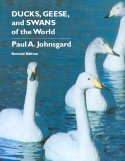 |
|
Waterfowl Of North AmericaPaul A. Johnsgard
University of Nebraska–Lincoln Libraries
2010
Originally published in 1975. This 2010 edition is a revised, electronic edition. It includes a supplement "North America’s Ducks, Geese and Swans in the 21st Century"
"Bird lovers and sportsmen will treasure and learn from every page of this information- packed, up-to-date, and lavishly illustrated volume, written by one of the world’s foremost authorities on waterfowl. Professional biologists, ornithologists, conservationists, and others concerned with the breeding and management of waterfowl will find it the most comprehensive and authoritative compendium of data in print for all of the nearly sixty species of ducks, geese, and swans known to breed in North America."
|
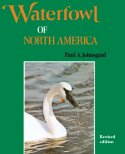 |
|
A Nebraska Bird-Finding GuidePaul A. Johnsgard
2009
Opening lines: "Persons living in Nebraska often feel that they are living in a cultural wasteland; its citizenry preoccupied with violent sports such as hunting and football. Yet many are unaware that they are actually residing in one of the prime locations in the entire world for observing and enjoying some of the most aesthetically appealing of all the world's biological attractions."
|
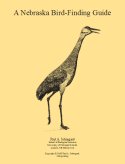 |
|
Birds of the Great Plains: Breeding Species and Their DistributionPaul A. Johnsgard
University of Nebraska-Lincoln Libraries
2009
This is a revised, electronic edition of a book that was originally published in 1980. This revised edition contains new range maps for many species, a new essay 'Three Decades of Change in Great Plains Birds,' and an updated bibliography of breeding bird surveys and state, regional, national, and species references.
"This book is the first to describe systematically all of the species of birds known to have bred or to breed at present in the Great Plains, a major ecological unit that encompasses all or part of part of eleven states: North Dakota, South Dakota, Minnesota, Iowa, Nebraska, Colorado, Kansas, Missouri, Oklahoma, New Mexico, and Texas."
|
 |
|
Birds of the Rocky MountainsPaul A. Johnsgard
University of Nebraska– Lincoln Libraries
2009
This is a revised, electronic edition of a book that was originally published in 1986. This electronic edition contains a new "Supplement" of approximately 12,000 words, updating the species accounts and the technical literature, including all those species that have undergone changes in their vernacular or Latin names, have had important changes in ranges, or have shown statistically significant population trends or conservation status warranting mention. The update also includes six additional species.
"This comprehensive reference work ...describes in detail 354 species found in a 353,000 square mile area, from the 40th parallel in Colorado north to the 52nd parallel in Canada; from the western border of Idaho to the eastern boundaries of Montana and Wyoming."
|
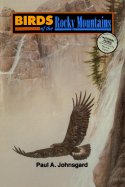 |
|
Four Decades of Christmas Bird Counts in the Great Plains: Ornithological Evidence of a Changing ClimatePaul A. JohnsgardWinter range maps: Thomas G. Shane
University of Nebraska–Lincoln Libraries
2009
Opening lines of foreword: "The rationale for this book has its origins in Terry Root’s 1988 Atlas of North American Wintering Birds, which provided a baseline landmark for evaluating the nationwide winter distributions of North American birds, using data from the National Audubon Society’s annual Christmas Bird Counts birds from 1962-63 through 1971-72. Tom Shane and I speculated that an updated analysis might shed light on the possible effects of more recent climatic warming trends on bird migration and wintering patterns in the Great Plains, a region known for its severe winters and also one of our continent’s important migratory pathways and wintering regions. As life-long residents of the Great Plains, we have both lived long enough to have witnessed some of these changes in avian migrations and wintering patterns personally."
|
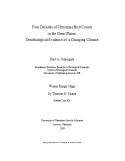 |
|
Song of the North Wind: Story of the Snow GoosePaul A. Johnsgard
Line drawings: Paul Geraghty
University of Nebraska–Lincoln Libraries
2009
This is a revised, electronic edition of a book that was originally published in 1974. This online electronic edition contains a new "Afterword" by the author, with updated migration maps and additional bibliographical references.
"A life history of the snow goose, based on a fictionalized account of a year in the life of a snow goose family. Many Native American myths and quotes are included."
|
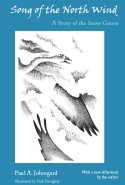 |
|
Celebrating Darwin's Legacy: Evolution in the Galapagos Islands and the Great PlainsPaul A. Johnsgard
Great Plains Art Museum / Center For Great Plains Studies / University of Nebraska–Lincoln Libraries
2009
Catalogue for Great Plains Art Museum exhibition, February 12 - March 29, 2009. An exhibition of photographs by Linda R. Brown, Josef Kren, Paul A. Johnsgard, Allison Johnson, and Stephen Johnson; paintings by Allison Johnson; drawings by Paul A. Johnsgard; and related Darwiniana. Sponsored by the Center for Great Plains Studies, James Stubbendieck, director, and the Great Plains Art Museum, Amber Mohr, curator, in honor of the bicentennial of Charles Darwin's birth (1809-2009) and the 150th anniversary of The Origin of Species (1859)."
|
 |
|
Wind Through the Buffalo Grass: A Lakota Story CyclePaul A. Johnsgard
Plains Chronicles Press
2008
"Wind Through the Buffalo Grass: A Lakota Story Cycle is a narrative history of the Pine Ridge Lakota tribe of South Dakota, following its history from 1850 to the present day through actual historical events and through the stories of four fictional Lakota children, each related by descent and separated from one another by two generations. The ecology of the Pine Ridge region, especially its mammalian and avian wildlife, is woven into the stories of the children. Illustrated by the author, the book includes drawings of Pine Ridge wildlife, regional maps, and Native American pictorial art. Appendices include a listing of important Lakota words, and checklists of mammals and breeding birds of the region."
|
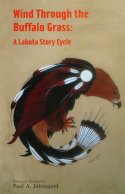
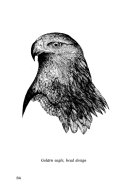 |
|
The Platte: Channels in TimePaul A. Johnsgard
Bison Books / University of Nebraska Press
2008
Originally published in 1984. This edition has a new preface and afterword by the author.
"Focusing on the central role the Platte has played in shaping Nebraska and its heritage, both human and natural, Paul A. Johnsgard presents in this book a "brief and personal portrait of the river as it has existed in the past and still exists today." "My special hope in doing so," he writes, "is that the value of the river as a living, complex, and natural ecologic system can be more fully appreciated, and that whatever steps may be necessary might be taken to preserve the river's integrity." Johnsgard tells the story of the Platte from prehistoric times to the present and then assesses its future. A selection of photographs and checklists of birds, mammals, amphibians and reptiles, fishes, and common plants of the Platte River and its valley enhance the book's interest and usefulness."
|
Buy from amazon.co.uk 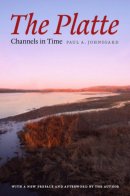
|
|
Louis A. Fuertes and the Zoological Art of the 1926–1927 Abyssinian Expedition of The Field Museum of Natural HistoryPaul A. Johnsgard
University of Nebraska–Lincoln
2008
This manuscript was produced in 1998-99 but not published at that time. This electronic edition is the first publication.
From the preface: "The year 2009 marked the 11Oth anniversary of the first colored reproduction of a Fuertes painting; a watercolor of two seaside sparrows published in The Auk, when Fuertes was about 25 years old. Although Fuertes' life spanned little more than a half-century, and most living ornithologists were born after his tragic 1927 death, his influence on natural history art has not lessened. This manuscript is a testimony to his enduring artistic legacy. I first looked in awe at the original set of Fuertes paintings in the summer of 1995, during a visit to the Field Museum in conjunction with my research on North American hummingbirds and avian brood parasites. Like many other lovers of fine bird art, I had marveled at the Field Museum's 1932 album of Abyssinian plates, but the sight of all the additional, and especially the original, images was overwhelming. I inquired at the time about plans for possible publication of the entire collection, and was told that this was under consideration."
|
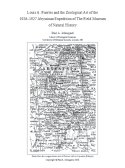 |
|
Cranes of the World in 2008: A Supplement to Crane MusicPaul A. Johnsgard
University of Nebraska–Lincoln Libraries
2008
Excerpt: "An overview of the current status of the world's cranes is perhaps in order, to bring up to date the accounts given earlier in Crane Music, which was written nearly 20 years ago. The accompanying table presents an updated (as of about 2004-2008) summary of world crane distribution and status, which shows some significant differences from the similar table presented in the first edition of that book. Some of these differences are the likely result of more complete and more accurate surveys, such as the substantially increased estimate of the black-necked crane's population, previously thought to number only about 1,600 birds. The same factor may help account for the larger estimates shown for the Siberian crane and blue crane."
|
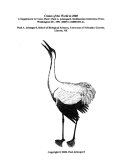 |
|
A Guide to the Natural History of the Central Platte Valley of NebraskaPaul A. Johnsgard
2007
Excerpt: "This booklet has been written in the hope that visitors to the Platte Valley may gain a greater appreciation for it through learning some of its animals and plants in addition to the Platte Valley's star spring attraction, its sandhill cranes. Besides the cranes, we have a world-class migration of geese and ducks, a slightly later migration of shorebirds, including what is probably the buff- breasted sandpiper's most important spring staging area between its South American wintering grounds and its arctic breeding grounds. Nebraska also has what may be the largest surviving population of greater prairie-chickens of any state, and an even larger population of sharp-tailed grouse. It is also perhaps the easternmost portion of the Great Plains where one can reasonably expect to see such classic grassland animals as prairie dogs, pronghorns, burrowing owls, prairie falcons, golden eagles and ferruginous hawks. Just to the north of the Platte Valley is the Sandhills region, a near-wilderness of 19,000 square miles with large populations of such classic grassland birds as long-billed curlews, upland sandpipers, homed larks, and a half-dozen species of grassland sparrows. And, just to the south of the Platte Valley is a unique Rainwater Basin, with dozens of spring meltwater ponds and marshes that seasonally support a large diversity of wetland species, Few other places in North America can provide to much appeal to birders and other naturalists. I hope you will enjoy the Platte Valley as much as I have done for nearly 50 year."
|
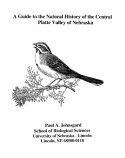
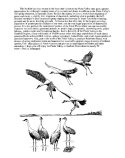 |
|
A Guide to the Tallgrass Prairies of Eastern Nebraska and Adjacent StatesPaul A. Johnsgard
2007
Opening lines: "This booklet represents an initial attempt at putting together some useful information on the locations, composition and ecology of tallgrass prairies of eastern Nebraska, one of the state's most valuable and most endangered ecosystems."
|
 |
|
The Birds of NebraskaPaul A. Johnsgard
Revised edition
2007
A new edition was published in 2013.
"This summary of the birds of Nebraska grew out of the research associated with the writing of my Birds of the Great Plains: Breeding Species and Their Distribution (University of Nebraska Press, 1979). Inasmuch as the only previous comprehensive summary of Nebraska's birds, the 'Revised Check-list of Nebraska Birds' (Occasional Papers of the Nebraska Ornithologists' Union, 1958) was about 40 years old, and has since received only a minimal revision that covered the period to 1970, it seemed apparent to me that a completely new list of birds of the state should be prepared. In my view, this would include a fairly detailed statement of the ranges of the breeding species insofar as they are now understood, a more objective separation of abundance categories for the relatively rarer species, a summary of migration data for all migratory species, and a brief statement of habitats used by each species while it is in Nebraska."
|
 |
|
Prairie Suite: A CelebrationTwyla Hansen
Illustrations: Paul A. Johnsgard
Published for Spring Creek Prairie Audubon Center
2006
"This summary of the birds of Nebraska grew out of the research associated with the writing of my Birds of the Great Plains: Breeding Species and Their Distribution (University of Nebraska Press, 1979). Inasmuch as the only previous comprehensive summary of Nebraska's birds, the 'Revised Check-list of Nebraska Birds' (Occasional Papers of the Nebraska Ornithologists' Union, 1958) was about 40 years old, and has since received only a minimal revision that covered the period to 1970, it seemed apparent to me that a completely new list of birds of the state should be prepared. In my view, this would include a fairly detailed statement of the ranges of the breeding species insofar as they are now understood, a more objective separation of abundance categories for the relatively rarer species, a summary of migration data for all migratory species, and a brief statement of habitats used by each species while it is in Nebraska."
|
 |
|
Prairie Dog Empire: A Saga of the Shortgrass PrairiePaul A. Johnsgard
University of Nebraska Press
2005
"An introduction to the ecosystem of the shortgrass prairie, Prairie Dog Empire describes in clear and detailed terms the habitat and habits of black-tailed prairie dogs; their subsistence, seasonal behaviour and the makeup of their vast colonies; and the ways in which their "towns" transform the surrounding terrain - for better or for worse. Johnsgard recounts how this terrain has in turn been transformed over the past century by the destruction of prairie dogs and their grassland habitats. This book also offers a rare and invaluable close-up view of the rich history and threatened future of the creature once considered the "keystone" species of the western plains."
|
Buy from amazon.co.uk 
|
|
Lewis and Clark on the Great Plains: A Natural HistoryPaul A. Johnsgard
University of Nebraska Press
2003
"Lewis and Clark on the Great Plains is an easy-to-use reference on the wildlife that Meriwether Lewis and William Clark encountered during their 1804-6 Corps of Discovery expedition. More than one hundred animals and plants that were first carefully described and in some cases discovered by Lewis and Clark are identified here. More than accounts of the regional flora and fauna, Lewis and Clark on the Great Plains examines the lasting importance of the expedition's discoveries, the significance of the Plains plants and animals to local Native Americans, and the current status of Plains wildlife. Lavishly illustrated with Paul A. Johnsgard's drawings of mammals, birds, fish, reptiles, and plants, the book also includes a guide to the Lewis and Clark sites of botanical and zoological interest and more than seventy sites where readers can follow in the footsteps of two of America's greatest pioneering naturalists."
|
Buy from amazon.co.uk 
|
|
Great Wildlife of the Great PlainsPaul A. Johnsgard
University Press Of Kansas
2003
"Choosing from the nearly 600 terrestrial vertebrates found on the Great Plains, Johnsgard focuses on the ecology, behaviour, and life histories of 121 notable species that people are most likely to encounter when traveling in the region. He has selected characteristic breeding birds, typical mammals, and conspicuous amphibians and reptiles - as well as additional species of conservation importance, animals of charismatic interest, and selected transients. The book is organized around ten distinct biotic communities, from the different varieties of native prairies to woodlands and wetlands, so that human visitors to those habitats can be on the watch for wildlife most often encountered there. More than seventy maps and illustrations enhance his text."
|
Buy from amazon.co.uk 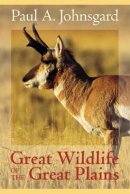
|
|
Faces of the Great Plains: Prairie WildlifeBob Gress and Paul A. Johnsgard
University Press of Kansas
2003
"The Great Plains are America's biological melting pot, drawing creatures from surrounding regions to create a rich diversity of wildlife. This book illuminates the enormous variety and uniqueness of prairie wildlife - featuring 150 of the most interesting and important species."
|
Buy from amazon.co.uk 
|
|
Grassland Grouse And Their ConservationPaul A. Johnsgard
Smithsonian Institution
2002
Grassland Grouse is a call to action from one of the world's leading ornithologists. Conservationists have seen a marked decline in the populations of North American grouse, particularly the grassland-adapted species. Unless action is taken swiftly, at least one species is certain to follow the heath hen into extinction. Johnsgard discusses places where populations exist that have yet to be preserved, and outlines the steps necessary to conserve these species. A possible future does exist for grassland grouse, and Johnsgard's book points the way toward securing it.
|
Buy from amazon.co.uk 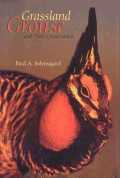
|
|
Migrations of the ImaginationPhotographs by Michael ForsbergDrawings, Sculptures and Quotations by Paul A. Johnsgard, and Additional Works of Art
Great Plains Art Collection, University of Nebraska-Lincoln / Center for Great Plains Studies, University of Nebraska
2002
Catalog of an exhibition produced by the Center for Great Plains Studies and Friends of the Center for Great Plains Studies, Lincoln, Nebraska. March 1-June 2, 2002.
Abstract: "Migrations of the imagination are those images, sounds, smells, and tastes that transport one to another time and place, possibly as close as Nine- Mile Prairie near Lincoln, or perhaps as far away as the Canadian high arctic, and to times that may be decades or centuries removed from one's personal life and experiences. They hold us in their thrall, expanding our vision, and touching our lives in special ways. They help retrieve our own memories or perhaps stir us to make new ones that will live with us for a lifetime."
|

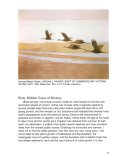 |
|
North American OwlsPaul A Johnsgard
Smithsonian Institution Press
2002
A guide to the owls of North America. The revised edition included 12 species of owls found in Mexico that were not included in the original 1988 publication. The text is fully updated and includes information on identification, mating, habitat and range, nesting patterns, and feeding. Includes colour plates and distribution maps.
|
Buy from amazon.co.uk 
|
|
The Nature of Nebraska: Ecology and BiodiversityPaul A. Johnsgard
Nebraska University Press
2001
"Where the eastern and western currents of American life merge as smoothly as one river flows into another is a place called Nebraska. There we find the Platte, a river that gave sustenance to the countless migrants who once trudged westward along the Mormon and Oregon trails. We find the Sandhills, a vast region of sandy grassland that represents the largest area of dunes and the grandest and least disturbed region of mixed-grass prairies in all the Western Hemisphere. And, below it all, we find the Ogallala aquifer, the largest potential source of unpolluted water anywhere. These ecological treasures are all part of the nature of Nebraska. With characteristic clarity, energy, and charm, Paul A. Johnsgard guides us through Nebraska's incredible biodiversity, introducing us to each ecosystem and the flora and fauna it sustains and inviting us to contemplate the purpose and secrets of the natural world as we consider our own roles and responsibilities in our connection with it."
|
Buy from amazon.co.uk 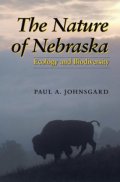
|
|
Prairie Birds: Fragile Splendor in the Great PlainsPaul A. Johnsgard
University Press Of Kansas
2001
"One of America's preeminent ornithologists, Johnsgard blends science, nature, and personal observations to tell the life histories of thirty-three grassland birds. Writing with precision and passion, he draws from his own observations to convey the magic of prairie birds, taking readers hawk-watching at Scotts Bluff or beside a prairie river on a spring evening with song sparrows in the willow thickets and cranes at the water's edge. In graceful prose, Johnsgard provides an overview of the history, current status, and uncertain future of prairie birds, from falcons and shorebirds to larks and sparrows. Some are intercontinental migrants that winter in South America, others sedentary species or short-distance travelers who may frequent the grasslands of Mexico. Johnsgard describes each species, its features, habits, habitats, migratory patterns, and breeding season ecology, with the knowledge and flair that has made his books indispensable for birders of every level of experience."
|
Buy from amazon.co.uk 
|
|
Trogons and Quetzals of the WorldPaul A. Johnsgard
Smithsonian Institution Scholarly Press
2000
"Beautifully illustrated with color plates and line drawings, this comprehensive review of trogons and quetzals - the first to be published in more than 150 years - covers all 39 extant species. It includes detailed species accounts, range maps, and identification keys as well as a chapter that discusses comparative biology in terms of evolution, anatomy and morphology, behaviour, ecology, breeding, biology, and populations. Forty hand-coloured plates - most by renowned nineteenth-century illustrator John Gould and others by John O'Neill, Dan Lane, Dana Gardner, and James D. McClelland - depict adults of both sexes. Nineteen line drawings by author Paul Johnsgard illustrate behaviour and anatomy."
|
Buy from amazon.co.uk 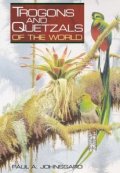
|
|
Earth, Water, and Sky: A Naturalist's Stories and SketchesPaul A. Johnsgard
Corrie Herring Hooks Series
University of Texas Press
1999
"Paul Johnsgard is one of America's most prominent ornithologists and a world authority on waterfowl behavior. In these popularly written, often lyrical essays, he describes some of his most fascinating encounters with birds, from watching the annual mating displays of prairie-chickens on a hilltop in Pawnee County, Nebraska, to attempting to solve some of the mysteries surrounding Australia's nearly flightless musk duck. Reflecting his worldwide interests and travels, the birds Johnsgard describes inhabit many parts of the globe. Grouping the birds by the element they frequent most - earth, water, or sky - he weaves a wealth of accurate natural history into personal stories drawn from a lifetime of avian observation. And, as a bonus, Johnsgard's lovely pen-and-ink drawings illustrate each species he describes."
|
Buy from amazon.co.uk 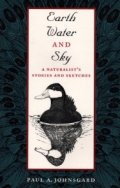
|
|
The Pheasants of the World: Biology and Natural HistoryPaul A. JohnsgardIllustrations: Joseph Wolf
Smithsonian Books
2nd Edition
1999
"Among the most important of all bird groups, pheasants account for the most abundant domesticated species (the domestic fowl), the most extensively hunted upland game bird (the common pheasant), and some of the most spectacularly beautiful of all large birds (the giant argus). This lavishly illustrated volume gives up-to-date information on the distribution, status, and biology of all 49 species, with special attention paid to those that are vulnerable, rare, or threatened. Including range maps and identification keys, The Pheasants of the World is a comprehensive reference not only for ornithologists and conservationists seeking to ensure the survival of the group, but also for aviculturists and others who want to better understand the nature of these splendid birds."
|
Buy from amazon.co.uk 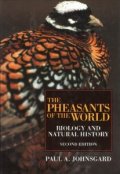
|
|
Baby Bird Portraits by George Miksch Sutton: Watercolors in the Field MuseumPaul A. Johnsgard
Foreword: Benjamin W. Williams, William R. Johnson
University Of Oklahoma Press
1998 (hardback)
2006 (paperback)
"George Miksch Sutton is one of the best known and most beloved bird artists of the twentieth century. This marvelous book presents thirty-five paintings of downy chicks, nestlings, and fledglings painted from life by Sutton. The exquisite watercolors, housed in the Field Museum of Natural History, span three decades and depict nineteen species of North American birds. Many of the paintings are reproduced here for the first time. Sutton was fond of painting young birds from life and of recording their developmental changes. Marked by delicate brushwork and subtle color variations, his paintings document characteristic features of the birds’ species as well as capturing the poses and attributes that make each bird seem so unique. Some paintings show not only juvenile plumage but also head portraits of adult plumage. The nineteen species include familiar garden birds such as cardinals, Great Plains inhabitants such as the grassland sparrows, and upland and wetland birds, including bobwhites, moorhens, and sandpipers. In his introduction to the collection, ornithologist Paul Johnsgard discusses Sutton’s contributions to bird art and to ornithology. And is essays accompanying the paintings, Johnsgard describes his and Sutton’s personal encounters with the birds. A tribute to Sutton’s genius as both an artist and an ornithologist, Baby Bird Portraits will be welcomed by ornithologists, bird enthusiasts, and Sutton’s legion of admirers."
|
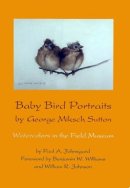
Buy from amazon.co.uk
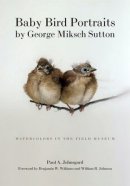 |
|
Crane Music: A Natural History of American CranesPaul A. Johnsgard
Bison Books
1998
"Graced with illustrations by the author, "Crane Music" introduces the two North American crane species. The sandhill, most often seen, is within easy reach of bird-watchers in the center of the continent. Less visible is the whooping crane, struggling back from near extinction. Paul Johnsgard follows these elegant birds through a year's cycle, describing their seasonal migrations, natural habitats, breeding biology, call patterns-angelic to the bird-lover's ear-and fascinating dancing."
|
Buy from amazon.co.uk 
|
|
The Hummingbirds of North AmericaPaul A. Johnsgard
Christopher Helm
2nd edition
1997
"Hummingbirds are found only in the New World and encompass a variety of specializations. This volume covers the identification, distribution and biology of the hummingbirds of North America. It includes 25 Mexican species. Full species-by-species accounts survey the evolutionary history, anatomical and physiological specializations, and comparative ecology, behaviour, and reproductive biology of this largest family of non-passerine birds."
|
Buy from amazon.co.uk 
|
|
The Avian Brood Parasites: Deception at the NestPaul A. Johnsgard
Oxford University Press
1997
"The evolutionary, ecological and behavioral questions posed by obligate brood parasites are among the most intriguing of all contemporary ornithological topics. Avian brood parasites lay their eggs in the nests of other birds and may be a major contributing factor driving several species of songbirds to near extinction. As one of the first books to present a comprehensive overview of this fascinating phenomenon, this work discusses the comparative biology and co-evolutionary adaptations exhibited by the five families of birds that engage in such behavior. Several chapters dealing with the comparative biology of both intraspecific and interspecific brood parasites, are followed by individual accounts of all known species - nearly 100 altogether, primarily cowbirds and cuckoos. Some of the more remarkable behavioral and structural adaptations of these birds include egg mimicry, juvenile mimicry, elimination by starvation or actual attack of other nestlings or host eggs, and even the learning and partial mimicry of host song traits. An extended glossary, a list of Latin names, 400 literature citations and range maps of all parasitic species discussed are also included. Detailed line drawings by the author enhance this synthesis of biological and ecological information."
Includes a section on Honeyguides which discusses 17 species. |
Buy from amazon.co.uk 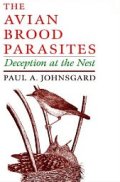
|
|
A Nebraska Bird-Finding GuidePaul A. Johnsgard
1997
A 40 page guide to birding sites.
|
 |
|
The Birds Of Nebraska And Adjacent Plains StatesPaul A. Johnsgard
Nebraska Ornithologists' Union
1996
A 40 page guide to birding sites.
|
 |
|
Ruddy Ducks and Other Stifftails: Their Behaviour and BiologyP.A. Johnsgard and M. Carbonell
University of Oklahoma Press
1996
"An introduction to the morphology, behaviour, and ecology of the ruddy duck and its relatives including the black-headed duck, the masked duck, the maccoa, and the Argentine and Australian blue-billed ducks."
|
Buy from amazon.co.uk 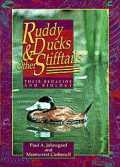
|
|
Arena Birds: Sexual Selection and BehaviorPaul A. Johnsgard
Smithsonian Institution Press
1994
"Arena birds - those birds whose mates gather for competitive sexual display in open spaces called arenas or leks - are amoung the most beautiful birds in the world. Paul Johnsgard surveys the mating behavior of many species and groups and explains how arena birds select mates on the basis of either male dominance or female choice."
|
Buy from amazon.co.uk 
|
|
Cormorants, Darters, and Pelicans of the WorldPaul A. Johnsgard
Smithsonian Institute
1993
The first comprehensive study of the world's 32 species of cormorants and shags, two species of darters, and seven species of pelicans. The first section of the book analyses comparative biology and second gives detailed accounts of individual species. Includes colour illustrations and anatomical drawings.
|
Buy from amazon.co.uk 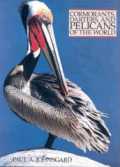
|
|
Ducks in the Wild: Conserving Wildfowl and their HabitatsPaul A. Johnsgard
Key Porter Books / Swan Hill Press
1992
"There are 111 species of ducks in the world, but many of them are threatened by both pollution and disappearance of their natural habitat. This book contains colour photographs of each species, an identification guide, and maps showing distribution, as well as details of habits and breeding."
|
Buy from amazon.co.uk 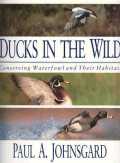
|
|
Bustards, Hemipodes and Sandgrouse: Birds of Dry PlacesPaul A. Johnsgard
Oxford University Press
1991
"The bustards, hemipodes, and sandgrouse represent three taxonomically distinct and diverse families. Most of their members have become adapted to life in deserts, semi-deserts, or steppes of the Old World. This is the first monograph covering any of these groups, and is a companion volume to the author's The Pheasants of the World and The Quails, Partridges, and Francolins of the World. It covers all fifty-one extant species, and all but one of them are illustrated by paintings by Major Henry Jones, done from specimens in The Natural History Museum, London. These paintings are owned by The Zoological Society of London and are reproduced with their permission. The Lark-quail is illustrated by a new painting by Mark Marcuson. The text includes comparative chapters on the taxonomy and phylogeny of the three bird groups, their zoogeographic patterns, social behaviour, breeding biology, and status (in cases of rare or endangered species). The species accounts include identification criteria, summaries of available biological information, and range descriptions. Keys for the identification of genera and species are also provided, and approximately four-hundred literature sources are cited."
|
Buy from amazon.co.uk 
|
|
Hawks, Eagles and Falcons of North AmericaPaul A. Johnsgard
Smithsonian Books
1990
Reprint 2002
"A comprehensive reference discusses all aspects of raptors, including their biology, habitat, and behavior, and offers identification information."
|
Buy from amazon.co.uk 
|
|
Quails, Partridges and Francolins Of The WorldPaul A. Johnsgard
Illustrations: Henry Jones
Oxford University Press
1988
This book describes 103 species of Old World quails, partridges and francolins and 31 species of New World quails. The descriptions cover biology, ecology, development, behaviour, taxonomy, and zoogeographic aspects. Includes 127 colour plates and 42 maps. The book is a companion volume to the author's Pheasants of the World.
|
Buy from amazon.co.uk 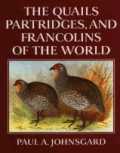
|
|
North American Owls: Biology and Natural HistoryPaul A Johnsgard
Smithsonian
1988
|
Buy from amazon.co.uk 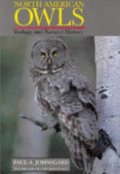
|
|
Diving Birds of North AmericaPaul A. Johnsgard
University of Nebraska Press
1987
A comparative study that examines the anatomy, ecology, and behaviour of three groups of diving birds; 4 loons, 6 grebes, and 21 auks, of North America. The species accounts are accompanied by 32 colour plates, 28 maps and other drawings and illustrations. Appendices include identification keys, head profile drawings of all species, lists of major auk colonies in North America, and lists of the status of grebes at major US refuges. An extensive bibliography is also included.
|
Buy from amazon.co.uk 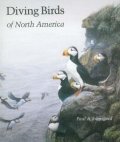
|
|
The Waterfowl of North America: The Complete Ducks, Geese and SwansRobin Hill
Introduction: S. Dillon Ripley
Technical Text: Paul A. Johnsgard
Morris Communications
1987
|
Buy from amazon.co.uk 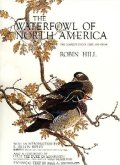
|
|
The Pheasants of the World: Biology and Natural HistoryPaul A. JohnsgardIllustrations: Joseph Wolf
Oxford University Press
1st Edition
1986
"This book gives up-to-date information on the distribution, status, and biology of all the 49 extant species of pheasants. Special attention is paid to the staus of vulnerable, rare and threatened species."
|
Buy from amazon.co.uk 
|
|
Birds of the Rocky MountainsPaul A. Johnsgard
University of Colorado Press
1986
"This comprehensive reference work ...describes in detail 354 species found in a 353,000 square mile area, from the 40th parallel in Colorado north to the 52nd parallel in Canada; from the western border of Idaho to the eastern boundaries of Montana and Wyoming...Here a visitor to any of the major national parks in the Rocky Mountain region can have quick access to the abundance and seasonality of a given species. In addition, a comprehensive introduction describes the predominant life zones of the region, and over a dozen maps illustrate such significant features as precipitation patterns, vegetation community types, and major physiographic provinces.The book is well written and an essential guide for the birder who visits the Rockies."
|
Buy from amazon.co.uk 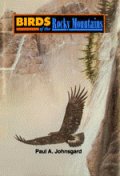
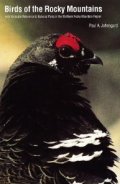
|
|
The Platte: Channels in TimePaul A. Johnsgard
University of Nebraska Press
1984
|
Buy from amazon.co.uk 
|
|
Cranes Of The WorldPaul A. Johnsgard
Indiana University Press
1983
|
Buy from amazon.co.uk 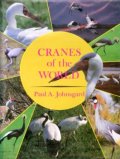
|
|
Grouse of the WorldPaul A. Johnsgard
University of Nebraska Press / Christopher Helm
1983
A study of all the 16 species of grouse, capercaillies and ptarmigans of the world, including their comparative biology and individual life histories. Includes an extensive bibliography, 51 color plates 15 maps and 34 drawings by the author.
|
Buy from amazon.co.uk 
|
|
The Hummingbirds of North AmericaPaul A. Johnsgard
Color plates: James D. McClelland
Smithsonian Institution Press
1983
"A survey of the comparative biology and individual life histories of the 23 North American species of hummingbirds occurring north of Mexico. A glossary of technical terms and a 200-reference bibliography are included."
|
Buy from amazon.co.uk 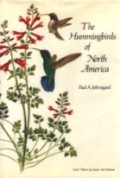
|
|
Teton Wildlife: Observations by a NaturalistPaul A. Johnsgard
Colorado Associated University Press
1982
"The diversity of wildlife in Grand Teton National Park and its environs draws millions to the valley of Jackson Hole every year, but few are the visitors who are able to observe individual species over the course of several seasons. Paul Johnsgard, a noted naturalist who has written many books on the waterfowl of the world, here integrates his own observations with those who have studied Teton wildlife in the past. The result is a compassionate, simple reconstruction of the lives of a few individuals from spring through early autumn. Teton Wildlife describes the migration of a herd of antelope to the lower flatlands of the Gros Ventre Range in early spring; the lives of a family of coyote on the sagebrush flats of Jackson Hole; the mating ceremony of a pair of Sandhill Cranes on the willow flats near Jackson Lake dam; and the activity of several other species in a wide range of habitats from barren glacial cirques to lush aspen groves."
|
Buy from amazon.co.uk 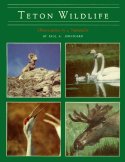
|
|
Plovers, Sandpipers and Snipes of the WorldPaul A. Johnsgard
University of Nebraska Press
1981
A guide to 165 species of waders with identification keys, comparative biology, and species accounts. Includes 60 colour plates and 135 distribution maps.
|
Buy from amazon.co.uk 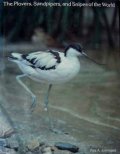
|
|
Those of the Gray Wind: Sandhill CranesPaul A. Johnsgard
St Martins Press
1981
A brief, fictionalized account of the lifecycle of the Sandhill Crane. Includes illustrations by the author.
|
Buy from amazon.co.uk 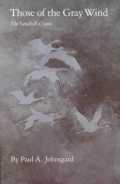
|
|
Birds of the Great Plains: Breeding Species and Their DistributionPaul A. Johnsgard
University of Nebraska Press
1980
"This book is the first to describe systematically all of the species of birds known to have bred or to breed at present in the Great Plains, a major ecological unit that encompasses all or part of part of eleven states: North Dakota, South Dakota, Minnesota, Iowa, Nebraska, Colorado, Kansas, Missouri, Oklahoma, New Mexico, and Texas. Although the original Great Plains ecosystem - the grassland biome - has been greatly altered by modem agriculture, remnants still exist in national and state parks, grasslands, and refuges, as well as in rural cemeteries, railroad rights-of-way, and small nature reserves. These areas support populations of nearly all the original and introduced birdlife - approximately 320 species - of the Great Plains."
|
Buy from amazon.co.uk 
|
|
Ducks, Geese and Swans of the WorldPaul A. Johnsgard
University of Nebraska Press
1978
A revised, electronic edition of this book was published in 2010.
|
Buy from amazon.co.uk 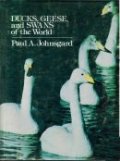
|
|
Waterfowl Of North AmericaPaul A. Johnsgard
Indiana University Press
1975
A revised, electronic edition of this book was published in 2010.
|
Buy from amazon.co.uk 
|
|
Song of the North Wind: Story of the Snow GoosePaul A. Johnsgard
Line drawings: Paul Geraghty
Doubleday / Anchor
1974
150 pages with 17 line drawings and 27 photographs.
"A life history of the snow goose, based on a fictionalized account of a year in the life of a snow goose family. Many Native American myths and quotes are included."
|
Buy from amazon.co.uk 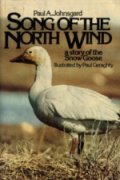
Buy from amazon.co.uk
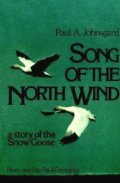
|
|
Grouse and Quails of North AmericaPaul A. Johnsgard
University of Nebraska Press
1973
A study of the 23 native species of grouse and quails occurring north of Guatemala in North America, plus two introduced partridges. An identification key and bibliography are included. Includes 52 colour plates, 88 monochrome photographs and other maps and drawings.
|
Buy from amazon.co.uk 
|
|
Waterfowl: Their Biology and Natural HistoryPaul A. Johnsgard
University of Nebraska Press
1968
158 pages with colour and black and white plates.
|
Buy from amazon.co.uk 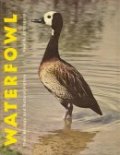
|
|
Handbook Of Waterfowl Behavior
Paul A. Johnsgard
Cornell University Press
1965
|
Buy from amazon.co.uk 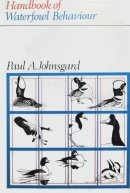
|
|
Waterfowl of North DakotaPaul A. Johnsgard
North Dakota Institute for Regional Studies
North Dakota Agricultural College
1953
Introduction: "North Dakota is a great waterfowl state. Within its borders more ducks nest every summer than in any other state. Each fall thousands of hunters share in the excellent duck and goose hunting, and every school child is aware of the immense flocks of migrating waterfowl that are such a common sight. This booklet was written not only to serve as a guide in identifying these birds, but also to point out something of their habits and importance."
|
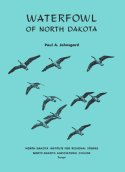
 |
|